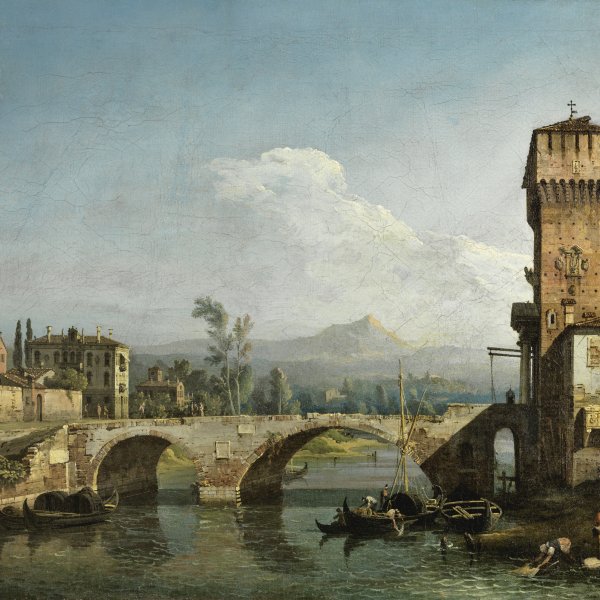Bernardo Bellotto
Venice, 1720-Warsaw, 1780
Bellotto was an apprentice in the studio of his uncle Canaletto where he is documented in 1735, soon absorbing the latter’s style. In 1738 he is registered in the painters’ guild in Venice and son after made a series of trips around various Italian cities. Among his views of Venice are The Rio dei Mendicanti and the Scuola di San Marco (Gallerie dell’Accademia, Venice), and The Church of SS. Giovanni e Paolo (Museum of Fine Arts, Springfield, Mass.). His first documented trip was to Padua followed by Rome, Lucca and Florence. Between 1743 and 1747 he was in Lombardy, Turin and Verona. The results of these visits are to be seen in his views of The Tiber with the Castel Sant’Angelo, Rome (Detroit Institute of Arts) and View of Verona with the Ponte delle Navi (Gemäldegalerie, Dresden). In 1747 he was in Dresden where he worked for Frederick Augustus II of Saxony and was appointed court painter one year later. Among his views of Dresden are The Moat of the Zwinger and the View of the Elbe with the Palace and the Hofkirche. Between 1758 and 1759 he travelled to Vienna to the court of Maria Teresa and in 1761 was working in Munich for Maximilian III of Bavaria. He then returned to Dresden, leaving in 1766 to establish himself in Warsaw at the court of Stanislas Augustus Poniatowski, where he was also named court painter. Important works from this last phase of his career include 24 canvases with scenes and panoramic views of Warsaw painted for a room in the royal palace.





